An engine-swapped Alfa Romeo and a gift from Enzo
In the fall of 1977, a young Robert Loglisci arrived in Italy to visit family and achieve a childhood dream. On his cap was the red-and-white maple leaf flag of his home country, Canada, but with a last name like Loglisci, you can guess that his Italian heritage ran deep. That hat ended up being more important than the teenage Robert could have guessed, leading to a memorable brush with greatness, a gift from the man they called il Commentadore, and a lifetime spent building and racing purebred Italian hot rods.

Today, anyone wanting to tour Ferrari’s factory need only buy a ticket. In the late 1970s, you needed a connection. Loglisci’s uncle knew someone who could arrange things, and the pair arrived at the door in Modena with great anticipation. And then they waited. And waited.
At last, the doors opened, the factory workers rushed out, and there stood the great man himself. Enzo Ferrari, a man not known to show much patience with actual paying customers, was a forbidding sight. But then Enzo clocked the flag on the young man’s hat.
The timing was perfect. Just one month prior Enzo had met this “piccolo Canadese” racing driver named Gilles Villeneuve, and he came away convinced that the French-Canadian could be the next Nuvolari. Ferrari would personally hire Villeneuve as a racing driver for the balance of the 1977 season, and on that autumn afternoon, he was inclined to treat another visiting Canadian with kindness.

To this day, Loglisci regrets that his uncle didn’t take a picture of the meeting (the uncle refrained, out of respect to Enzo). However, Loglisci did get his tour of the Ferrari factory, at the end of which Enzo Ferrari presented him with two gifts. One was an autographed copy of Il Libro Rosso, literally “the red book,” a history of Ferrari written by Enzo himself. The other was a bottle of il Commentadore’s favorite wine from a Maranello vintner.
“I drank the wine, of course,” quips Loglisci, “But I kept the bottle.”
Both items are normally tucked away in a study that is filled with mementos and racing trophies, but he brings them out and sets them gently on the back of his unusual 1967 Alfa Romeo Duetto Spider. He bought this car the year after returning from Italy, and you’d have to think Enzo would approve. After all, Ferrari got his start first driving and then managing racing Alfa Romeos. Loglisci’s ’67 is a road car, but under its hood is a 12V 3.0-liter Alfa Romeo V-6, a swap that he developed while racing another Alfa Spider, this one with a 24V V-6.
Loglisci’s racing history stretches back to pre-teen days building and competing in homemade go-karts. He wasn’t always the fastest kid on the circuit, but he won a race when his go-kart proved the most reliable; after all, to finish first, you must first finish. This opened up a pathway to a career as a mechanic. He worked on everything from Mercedes-Benzes to Lancias, and later struck out on his own, specializing in Italian marques.
At home, though, it was always Alfas. And while some Alfa Romeo owners wouldn’t dream of messing with the originality of their cars, Loglisci had a racer’s attitude toward his own. He wouldn’t dream of sullying them with parts from other marques, but under the Alfa umbrella was the opportunity for a wonderful recipe: Take the lightweight and nimble Spider and infuse it with a glorious Busso V-6. Presto! An Italian sports car with poise, a feisty power-to-weight ratio, and a soundtrack worthy of Pavarotti. Painted red, of course.
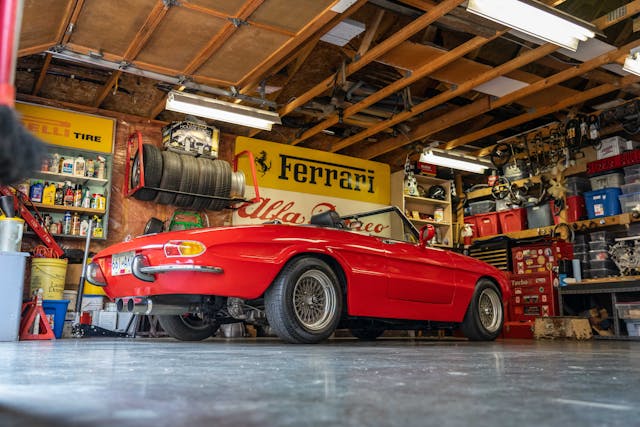
His first V-6–swapped Spider was a later 1991 model, completed about 20 years ago. The donor car was a 1994 164 sedan.
The swap took about two and a half years to complete, as no one had attempted a swap with the 24V yet. Loglisci took a painstaking approach, first assembling the engine and transmission pairing on a stand, then adjusting the body for clearances. Once everything was together, he performed the ultimate shakedown test by taking it racing. Over two years, he scored 11 podiums, including four first places.
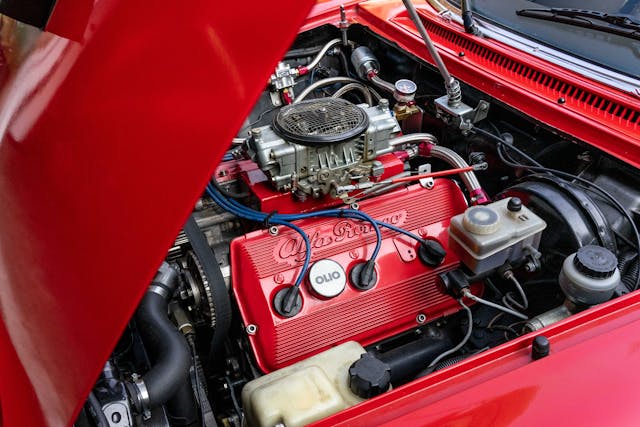
Further modification involved adjusting the mounts and fabricating an oil pan to be able to return the Spider’s firewall to its original configuration. Loglisci did all the work himself, including paint and bodywork. The V-6 fit like it should have been an option from the factory.
The 1967 Duetto was completed more recently, fitted with a 12V engine and a four-barrel carburetor rather than fuel injection. Loglisci also updated the interior with many parts from a 1991 Spider.

The 1991 swap got a little attention when it was a featured car in European Car magazine, and Loglisci gets emails from time to time from people attempting similar builds. One recent missive came from none other than a couple of mechanics whose day job is on the McLaren F1 team.
Loglisci’s been back to Italy many times over the years, visiting the Lamborghini factory and the Alfa Romeo museum. He’s met Gilles Villeneuve and Mario Andretti. The Italian marque’s car community in Loglisci’s hometown on Vancouver Island is relatively small, but he does host semi-regular meets just down the road at a coffee shop that can do a proper Italian cappuccino.
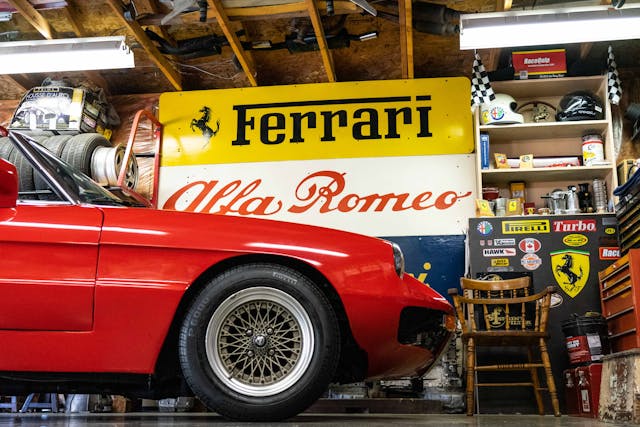
There are great roads all around the island, properly windy stuff with mountain views or coastal vistas. The water is the Strait of Georgia, rather than the Mediterranean, but on a warm summer’s day you might be fooled by the sunshine. Especially at the wheel of an open Italian roadster with a thrumming V-6 responding to a prod of the throttle.
And then to come home, park your homebuilt Alfa Romeo in the garage, and retire to your study. Take down the red-covered book from the shelf, and leaf through the pages of a great marque’s history. An empty wine bottle, still filled with great memories. The remembrance of shaking hands with a legend, a gift from Enzo.
***
Check out the Hagerty Media homepage so you don’t miss a single story, or better yet, bookmark it. To get our best stories delivered right to your inbox, subscribe to our newsletters.
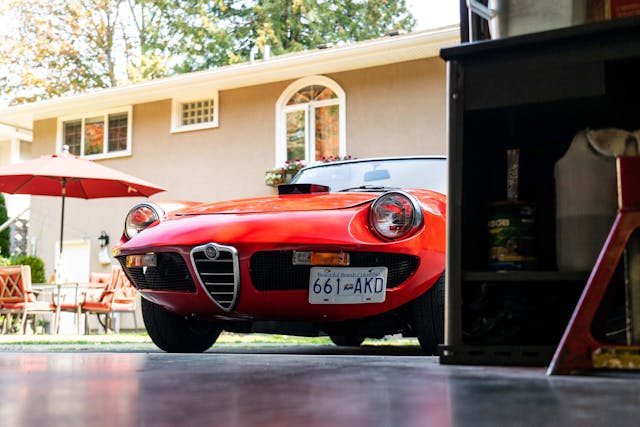
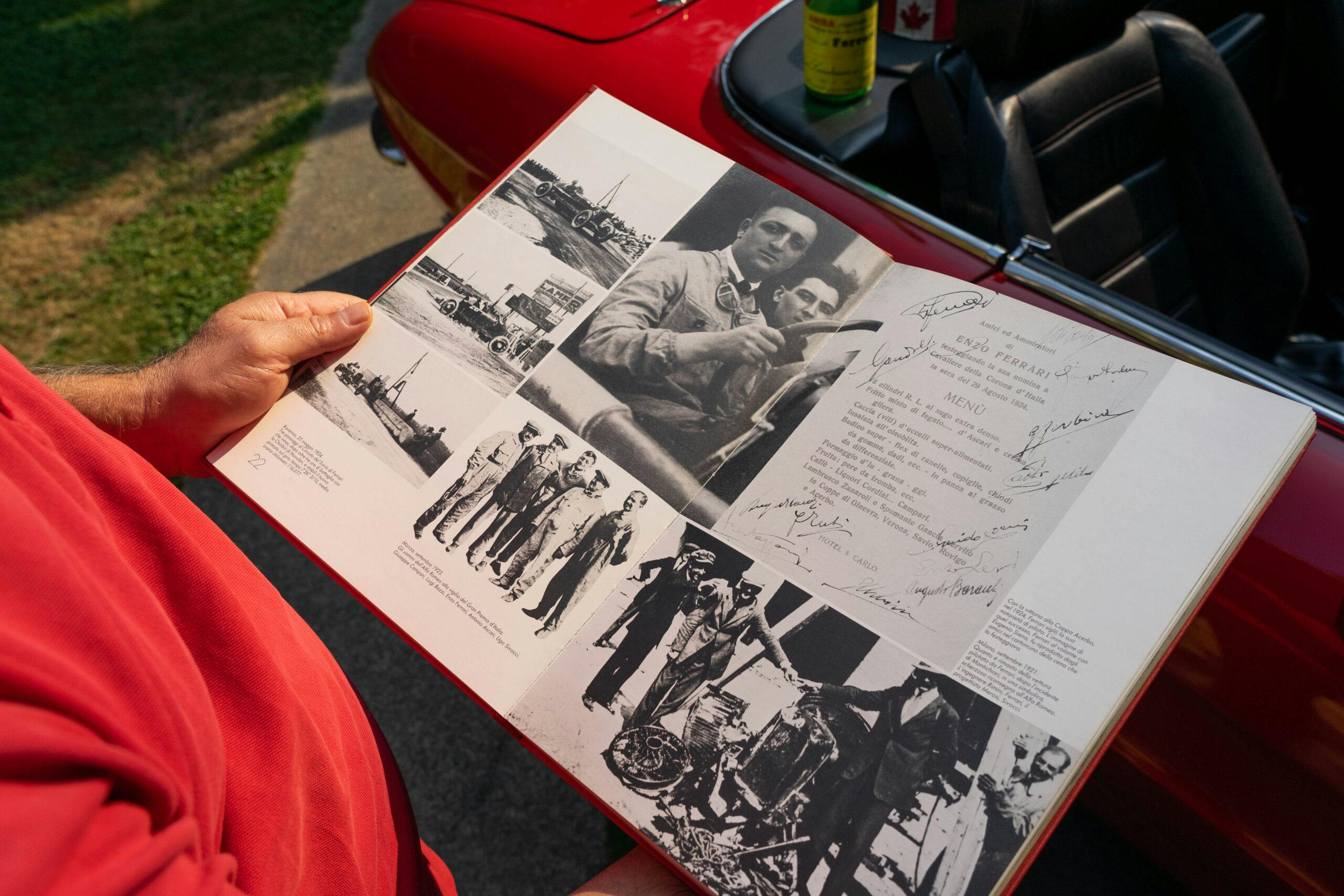

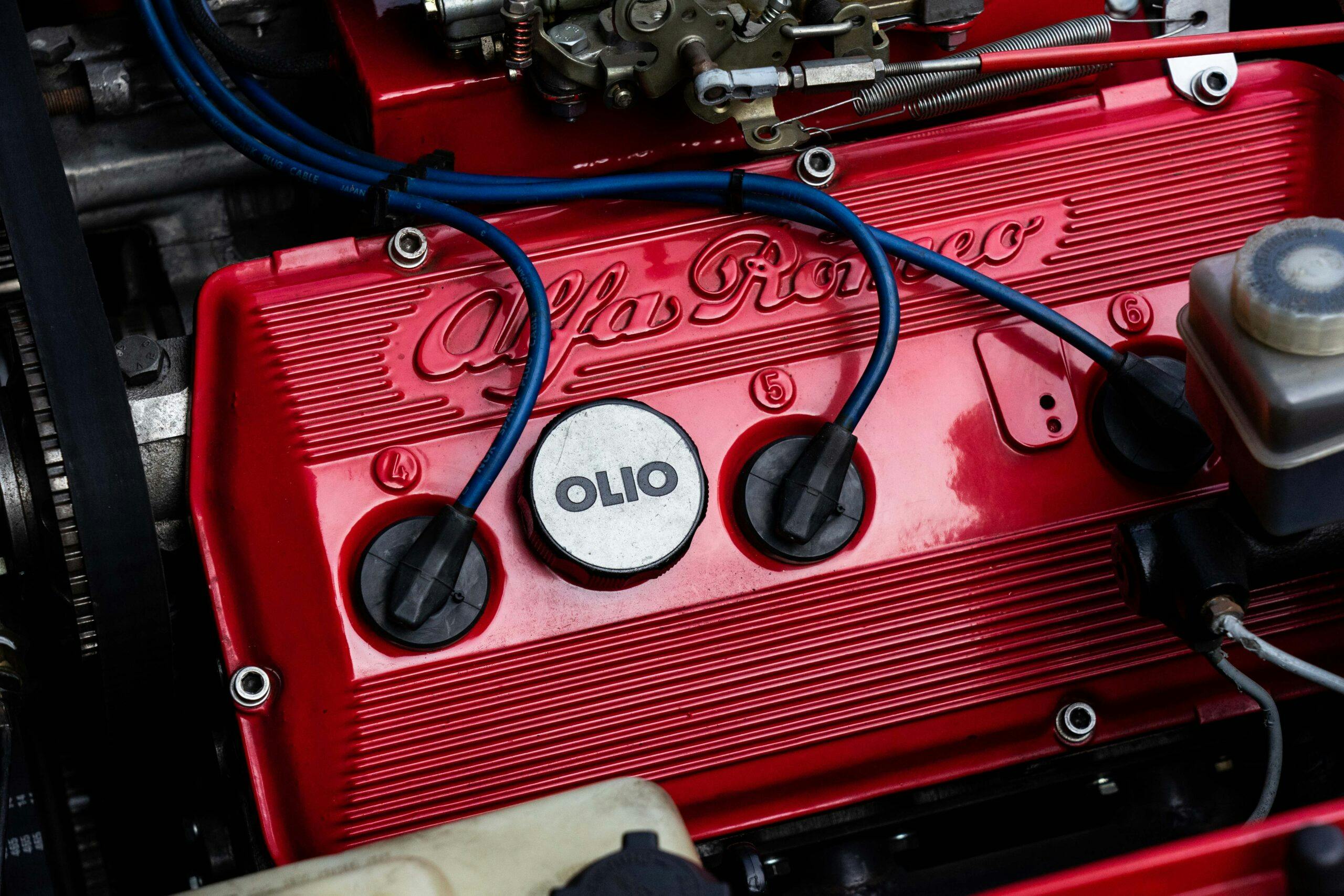
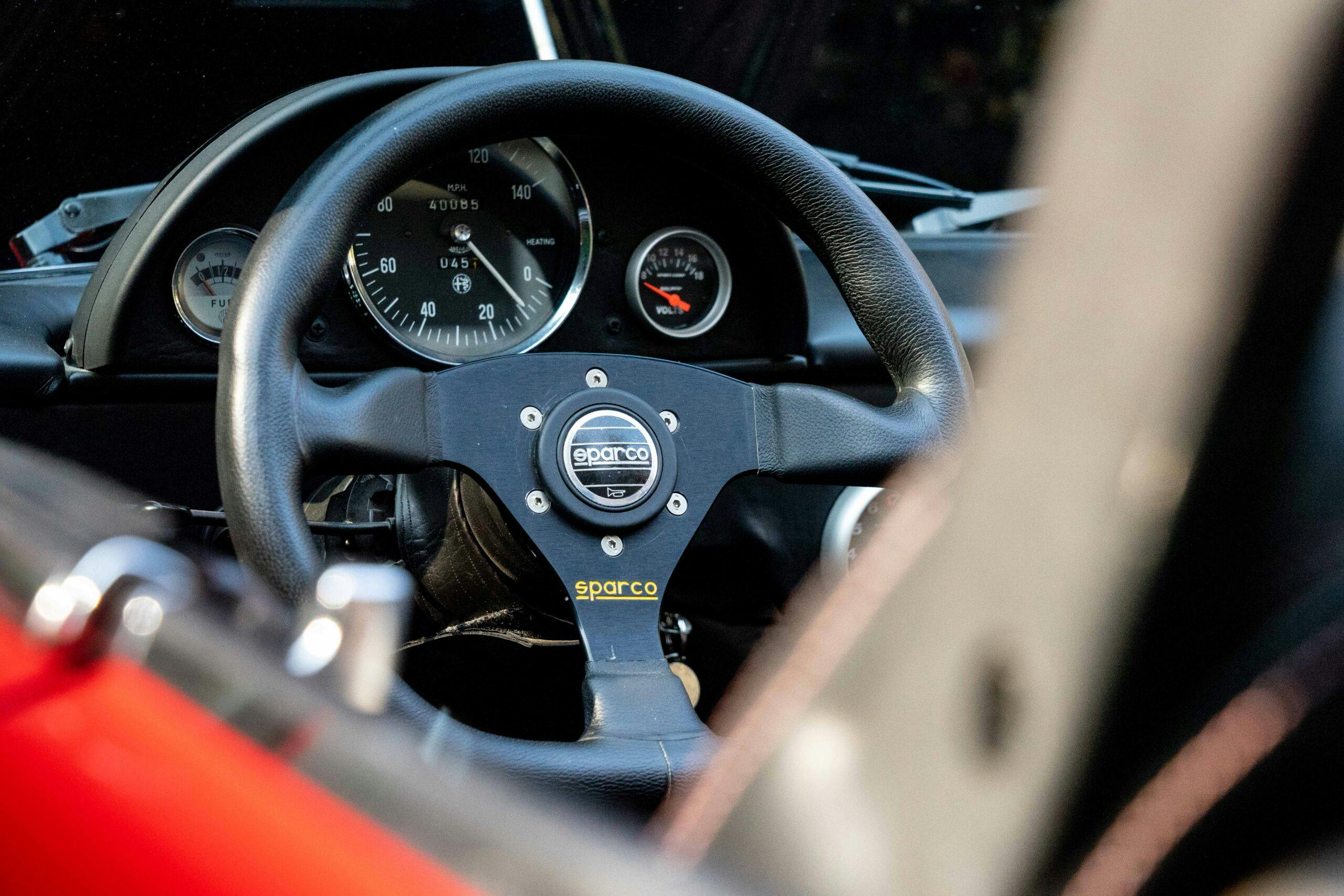
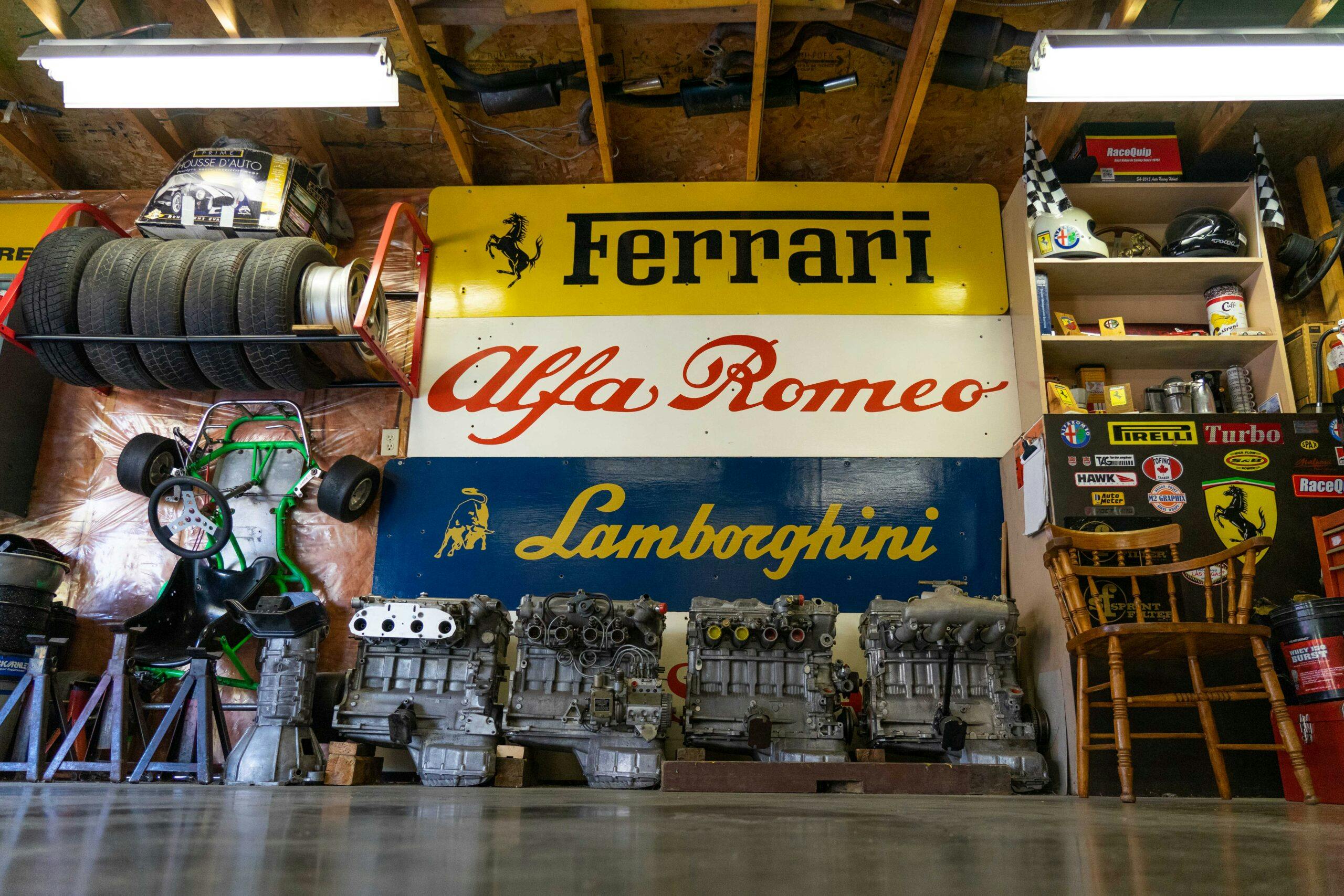

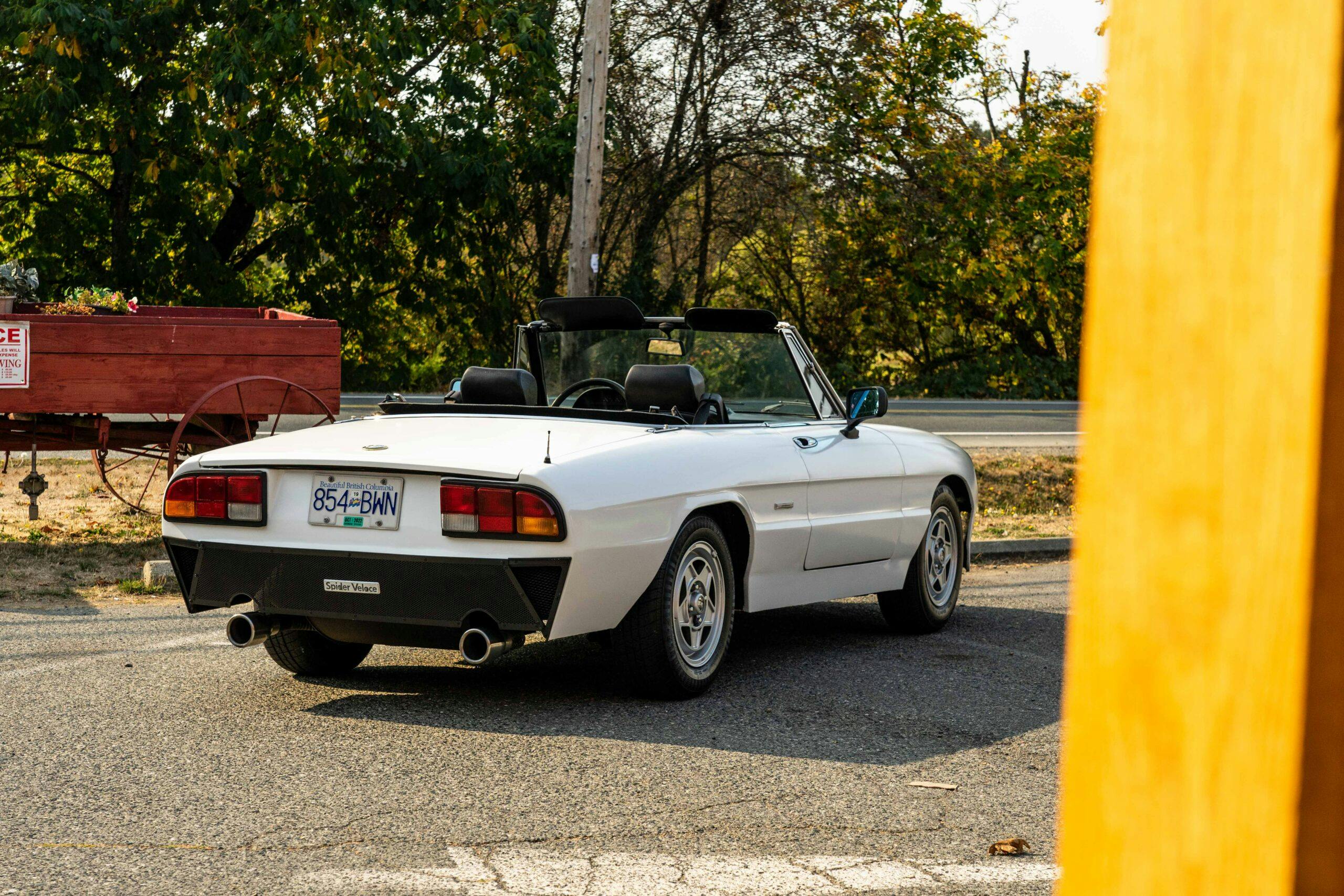
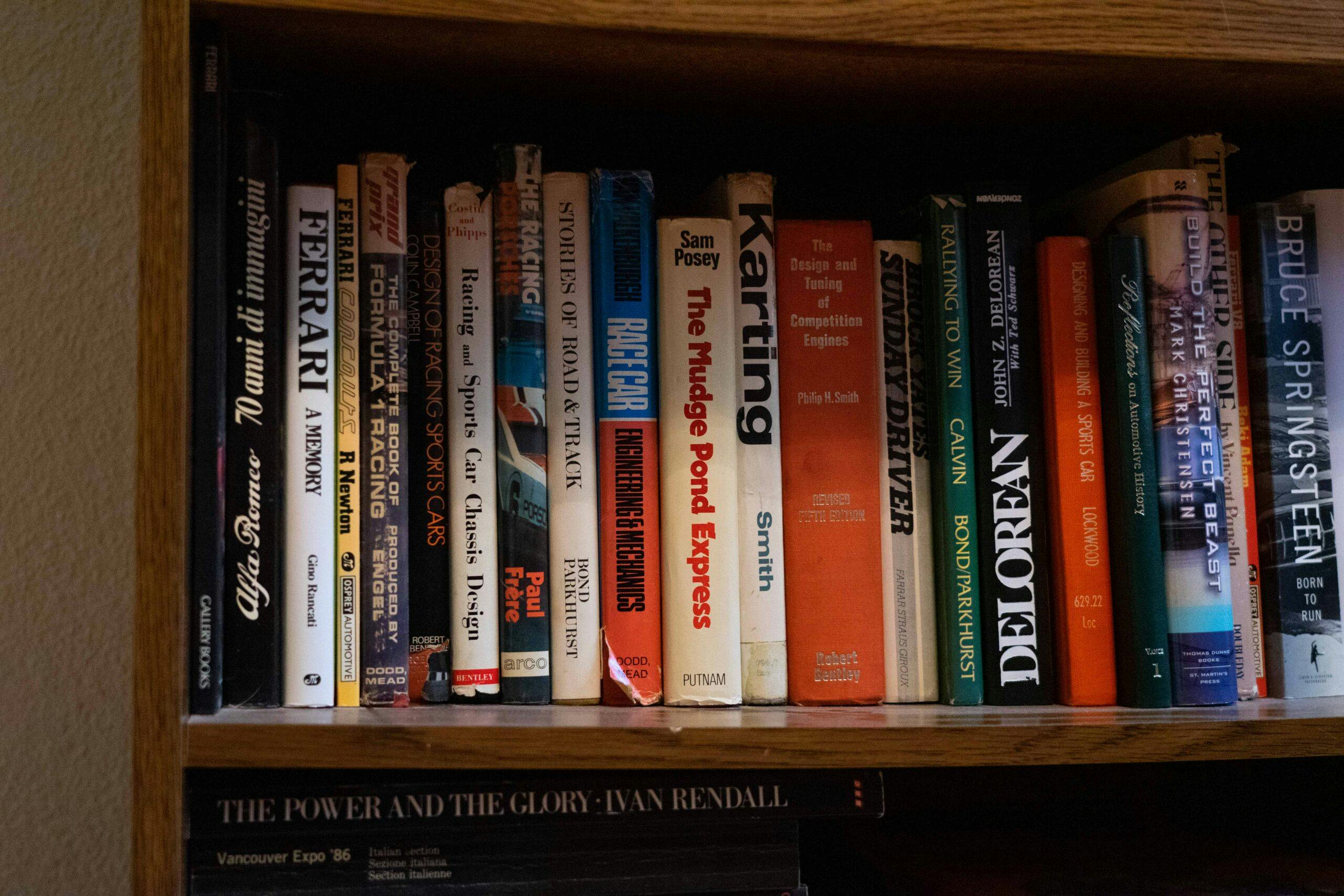
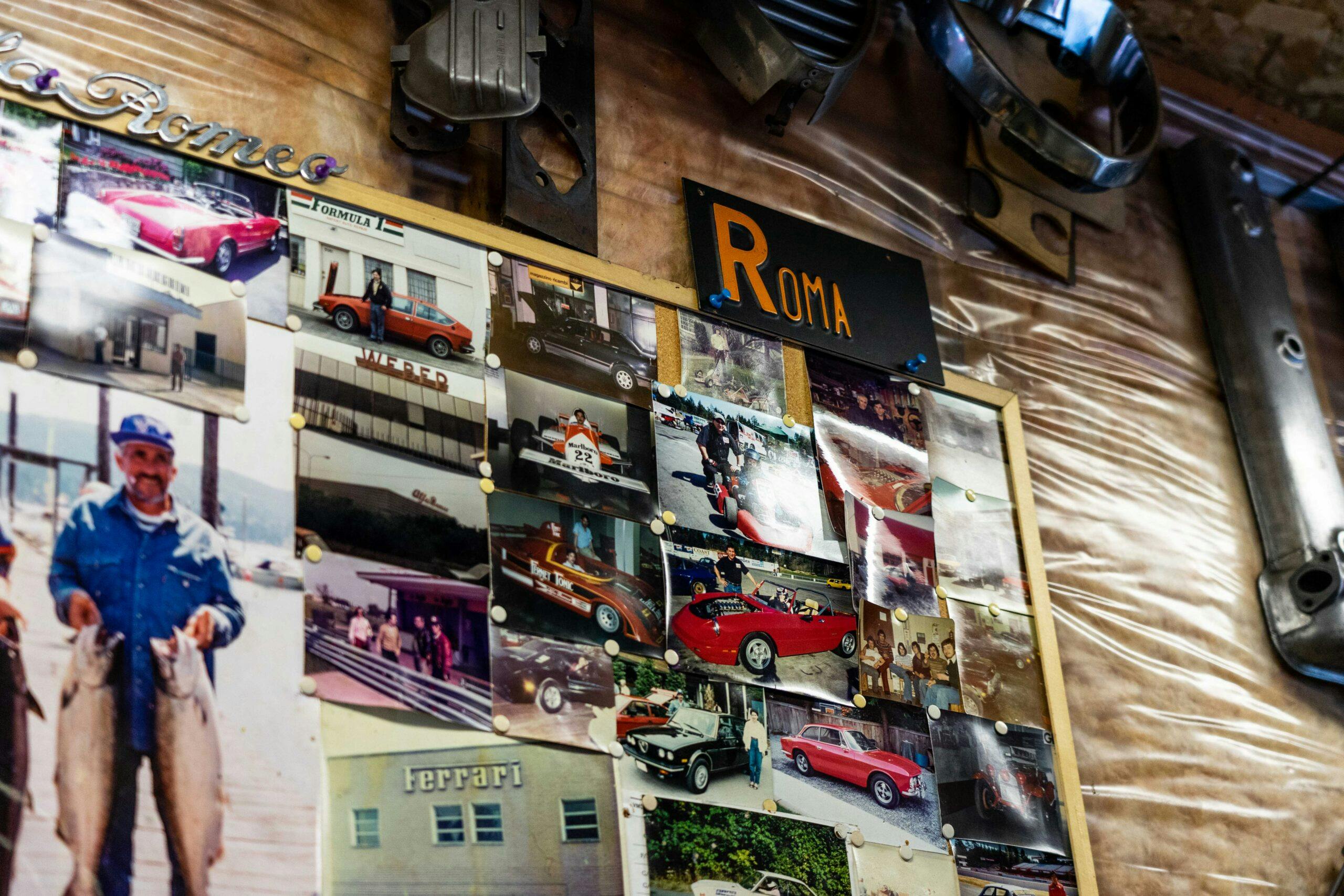


Having been one of the masses turned away at the gates of Maranello, I can’t imagine how great of an experience that must have been. Great story. Thanks.
That Spyder has got to be a handful. I had a GTV6 with a 3.0 and it was a terror! The sound it made would make your hair stand on end.
I was so waiting to see a shot of the engine tucked into the engine bay and as I scrolled down it never came.
Same. Although the V-6 may fit like a factory option, I’m thinking there might be a little ‘proprietary’ information involved in the actual setting.
It may not be as proprietary as you think. A number of these swaps have been completed and are well-documented on the Alfa discussion boards. Someone was making (and may still be making) bellhousings to link the Busso V6 block to the transmission common to all 105 series Alfas.
Like most swaps involving putting a V6 or V8 engine into a car originally designed for an inline engine, the exhaust headers seem to be the tricky part of the process. The headers really have to be shoehorned in there, and a bespoke exhaust system fabricated. Height above the V6 is restricted (notice that Loglisci had to put a scoop on his Duetto’s hood to accommodate the carburetor). All swaps that I have seen just kept the V6’s original fuel injection, which is much lower profile. Don’t know why Loglisci went to the effort of adapting a carburetor to the V6.
Me Too!
That Spyder looks good. I would have liked to see the V6 in the car.
The sixth photo down is of the V6 in the engine bay, but maybe it’s too closeup of a shot. I’ll upload a wider shot.
Grazie. You know darn well all the Alfisti are calling around to the junkyards…
If I ever get to visit my son-in-law cousins who live on Salt Spring Island, I will try to get to the coffee shop and met Mr. Loglisici . If I can I would hope to see his cars, as for mine a 1964 spider that is mostly original.
There is a very tasty Porsche 904 / Carrera GTS on Salt Spring, hope to cover that soon.
I have a twin turbo 3 Litre Busso in my 84 Alfa Spider, and yes…it can be a handful. The solid rear axle does not help.
Also interesting is the brake booster and clutch master for hanging pedals – which didn’t start until ’70 or ’71. Making the engine clear the firewall must’ve included welding in a 115 firewall…